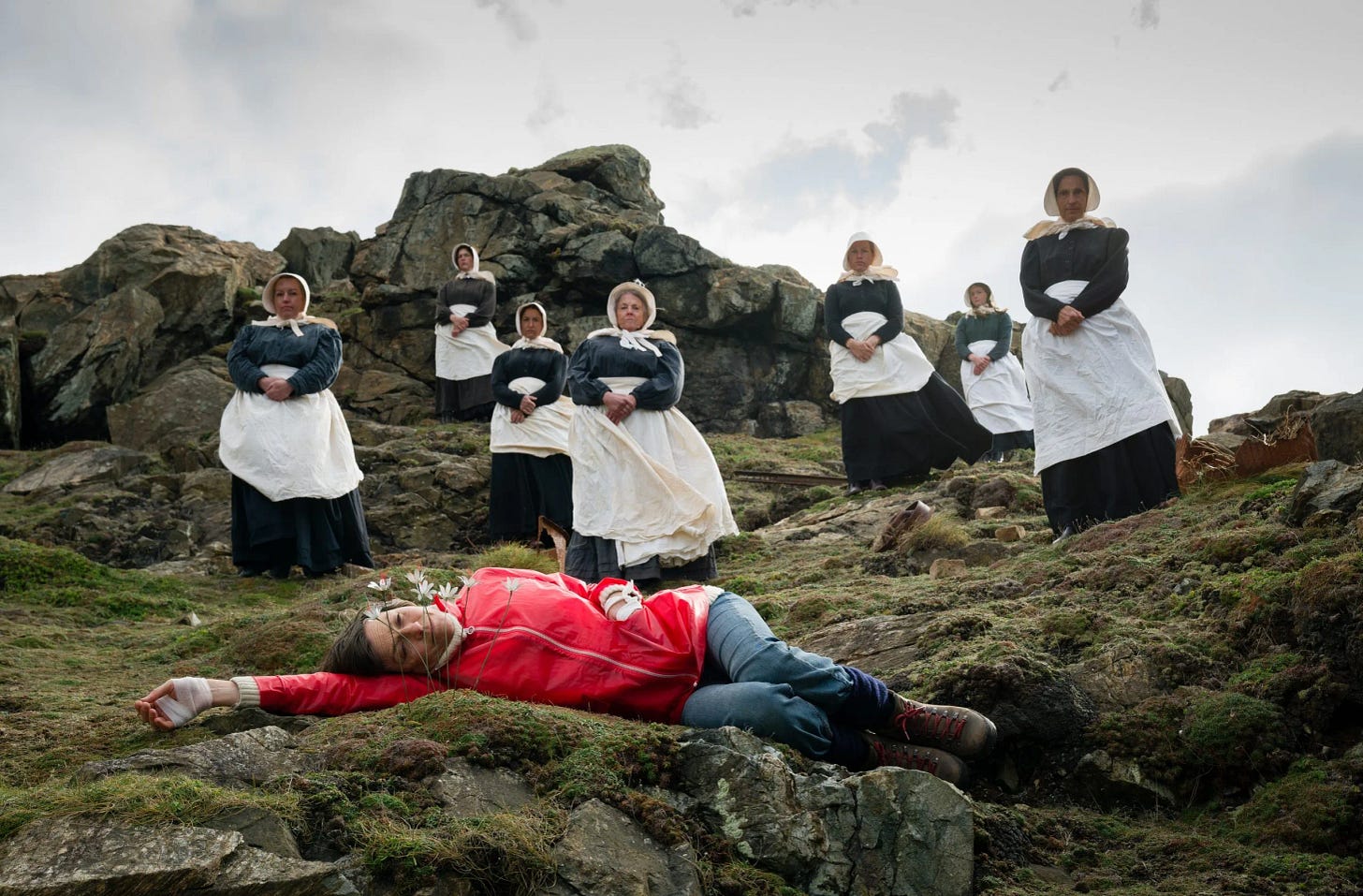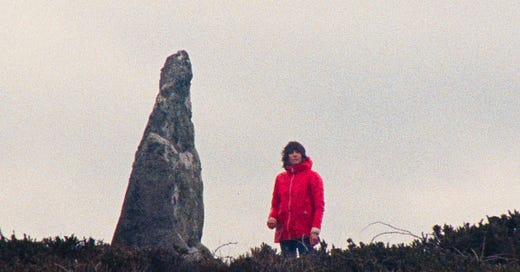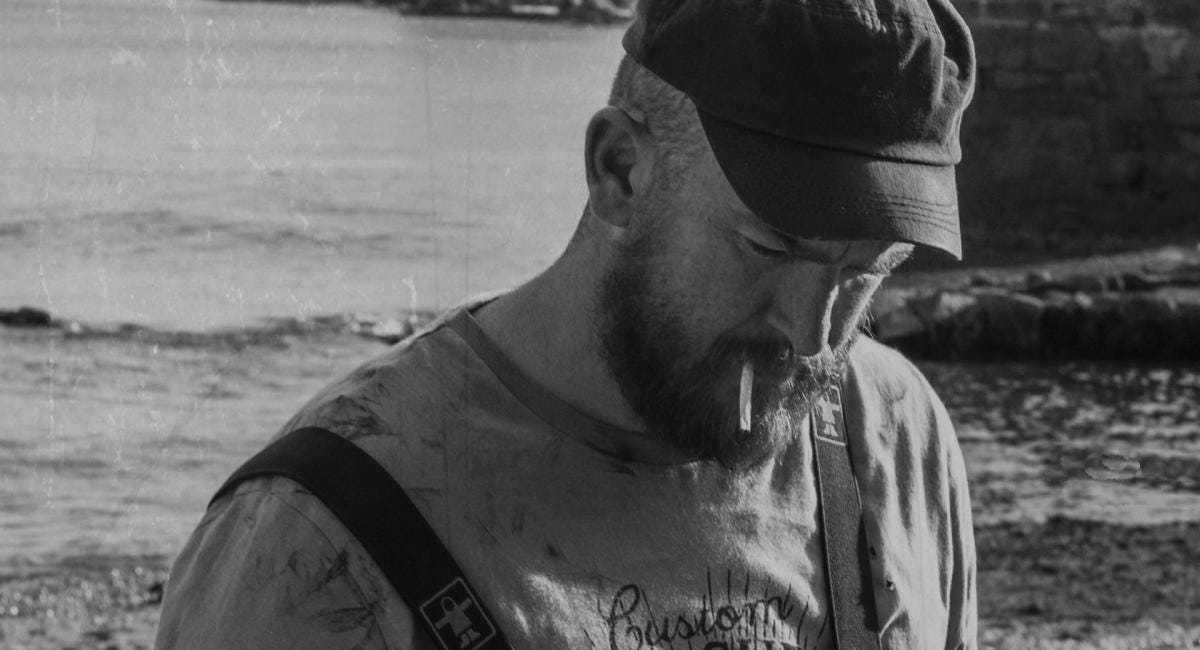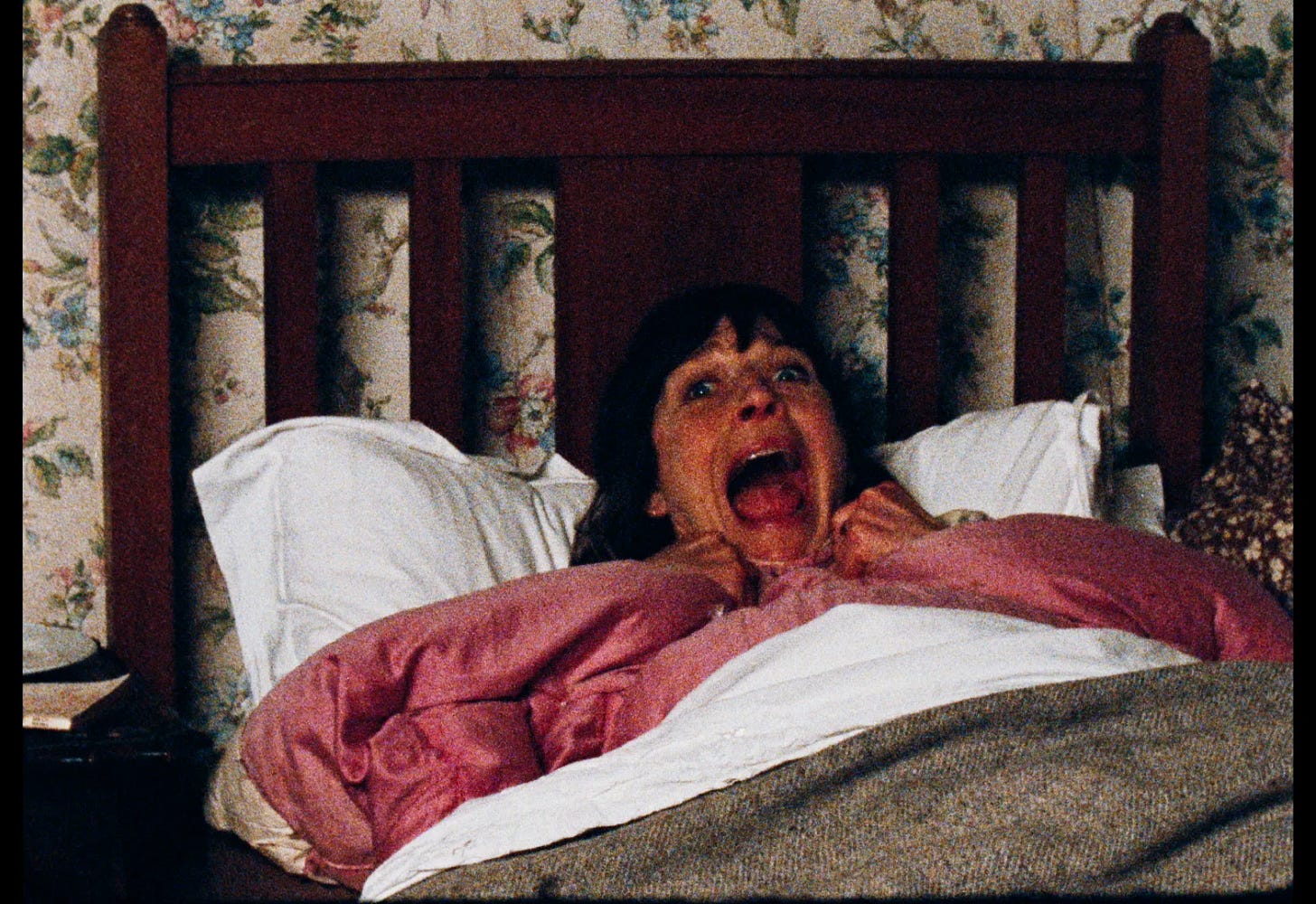Spoilers for Enys Men (2022)
In Mark Jenkin’s 2019 film Bait, the characters find themselves between time periods. The traditional Cornish fishermen dealing with the demands of holidaymakers and an influx of high-paying, second homeowners, which is changing the fabric of the village.
In Enys Men, his 2022 follow-up, our protagonist is stuck out of time, with the past, present and future converging on an uninhabited island off the Cornish coast. In his statement for the BFI release of the film, Jenkin notes that while he intended to make a ‘true’ folk horror film, during the process of writing it, Enys Men became something of a mood piece.
Indeed, it lacks a lot of the elements of folk horror. The Volunteer (Mary Woodvine) is not at odds with the history of the island. She instead aims to protect it, observing a small crop of rare flowers that appear to thrive on the rocky cliffs. Rather than pit her against a paganistic, cultish enemy, Jenkin explores how our desire to escape the hustle of modern life impacts the natural world.

The Volunteer is escaping something. Her daily routines and rituals are punctuated by memories of her teenage self (Flo Crowe), who appears to act out in ways that are harmful to herself. There’s also the image of an elderly preacher (John Woodvine), as well as miners and a group of young dancers – like what you may see around the Maypole.
Nothing is spelt out in the film, but by trying to escape her past and what appears to be an overbearing Christian upbringing, the Volunteer imposes herself on the island, and in turn, a long history of folk belief, industry and superstition begins to impose on her.
Her impact on the island is shown through repetitive rituals. She wakes; heads out to cliffs to observe the flowers, and throughout the first few cycles observes no change in their appearance. The monotony of this is captured in her diary, which Jenkin focuses the camera on. ‘No change’ dominates the screen. After her observations are complete, she walks back to the house, passing behind the ominous standing stone and dropping a stone into the island’s mineshaft.
It’s through this routine that we start to see changes occur across the island. Benevolent and malevolent occurrences begin. The first is the appearance of lichen – a symbiotic, moss-like plant – on both the flowers and the Volunteer herself, adhering to the scar tissue across her abdomen. Lichen do not feed off the host, hence why they can grow almost anywhere, instead they cycle nutrients to create a mutually beneficial relationship.
Then there is the apparent movement of the standing stone. Jenkin states that he was influenced by the Merry Maidens standing stone circle in Cornwall. The legend goes that 19 maidens were turned to stone for dancing on the Sabbath, with the two outlying stones representing the pipers who played that day. This explains not only the dancers that appear around the Volunteer’s house, but also the appearance of an elderly group of women on the island, and possibly even the preacher.
Jenkin doesn’t indicate that the Volunteer, herself, is damaging the habit of the island, but that people are naturally harmful to the balance. Her daily ritual does not directly cause damage, but her entire presence is enough to awaken the memories of the rock. Her experience shifts from living in harmony with the island, to witnessing how the impact of man has been punished throughout history.
The miners who were vital to industry but harmful to the areas in which they worked; the boatmen who were lost at sea to the whims of wind and tide; the dancers who angered gods old and new by disobeying the rules of the Sabbath. And by the end, the Volunteer is pulled into that history. She starts to see herself, both the younger and present-day versions, from afar.
In the end, either metaphorically or in reality, she becomes the standing stone. Integrated not only into the island itself but into its history. She sees the wreckage of the house, abandoned and overgrown; she sees every iteration of herself, and the people who worked and died on the island. While she is an intruder to the island at the start, she becomes another crop of lichen, symbiotically living with the rock.
Writer/director: Mark Jenkin
Starring: Mary Woodvine, Edward Rowe, Flo Crowe, John Woodvine,
Joe Gray









